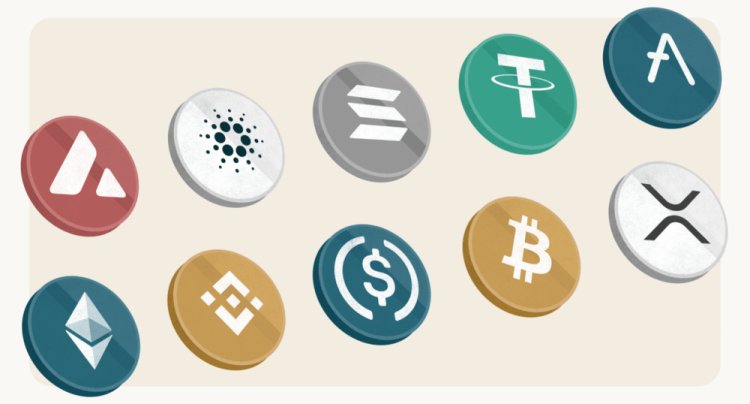E Money Tokens Explained: A Beginner's Guide to Digital Currency
Discover the basics of E Money tokens in our beginner's guide to digital currency. Learn how they work, their benefits, and their role in the future of finance.

In the rapidly evolving landscape of digital finance, E Money tokens have emerged as a revolutionary force. These digital assets promise to streamline transactions, enhance security, and offer unprecedented convenience. For those new to the concept, this beginner’s guide will break down what E Money tokens are, how they work, and their potential impact on the future of money.
What Are E Money Tokens?
E Money tokens, often referred to as electronic money tokens, are a form of digital currency that represents fiat money (traditional currency like dollars, euros, etc.) in a digital form. Unlike cryptocurrencies such as Bitcoin or Ethereum, which operate on decentralized networks and have no inherent value beyond what the market assigns, E Money tokens are typically issued by regulated financial institutions and are pegged to a specific fiat currency. This pegging ensures that each token has a stable value equivalent to the fiat currency it represents.
How Do E Money Tokens Work?
E Money tokens work by leveraging blockchain technology to facilitate secure and transparent transactions. Here’s a simplified process of how they operate:
1. Issuance: A financial institution or a licensed E Money issuer creates the tokens. Each token is backed by an equivalent amount of fiat currency held in reserve, ensuring that the tokens maintain their value.
2. Storage: Users can store E Money tokens in digital wallets, which can be accessed via smartphones, computers, or other digital devices. These wallets are secured with advanced cryptographic techniques to prevent unauthorized access.
3. Transactions: When users want to make a transaction, they transfer tokens from their digital wallet to the recipient’s wallet. The transaction is recorded on the blockchain, providing a transparent and immutable record.
4. Redemption: Users can convert their E Money tokens back into fiat currency at any time. The issuer redeems the tokens and transfers the equivalent fiat amount to the user’s bank account.
Benefits of E Money Tokens
E Money tokens offer several advantages over traditional payment methods and even some cryptocurrencies:
1. Stability
Since E Money tokens are pegged to fiat currencies, they do not suffer from the extreme volatility that plagues many cryptocurrencies. This stability makes them ideal for everyday transactions and savings.
2. Security
Blockchain technology ensures that all transactions are secure and tamper-proof. Additionally, digital wallets are protected by advanced encryption methods, making it difficult for hackers to steal funds.
3. Transparency
Every transaction made with E Money tokens is recorded on a public ledger (the blockchain). This transparency helps to reduce fraud and increase trust among users.
4. Convenience
E Money tokens can be transferred instantly across the globe, bypassing traditional banking systems and their associated fees and delays. This convenience is particularly beneficial for cross-border transactions and remittances.
5. Regulation
Unlike decentralized cryptocurrencies, E Money tokens are typically issued by regulated financial institutions. This regulation provides an additional layer of security and trust for users.
Potential Challenges
While E Money tokens offer numerous benefits, they also face some challenges:
1. Regulatory Hurdles
Different countries have varying regulations regarding digital currencies. Navigating these regulations can be complex for issuers and users alike.
2. Adoption
Widespread adoption of E Money tokens requires a robust digital infrastructure and a shift in consumer behavior. This transition may take time, particularly in regions with limited access to digital technology.
3. Competition
E Money tokens compete with both traditional banking systems and other digital currencies. Gaining a foothold in a crowded market can be challenging.
The Future of E Money Tokens
Despite these challenges, the future of E Money tokens looks promising. As technology continues to advance and more people embrace digital finance, E Money tokens could become a standard method of payment. Their stability, security, and convenience make them a compelling alternative to both traditional currencies and cryptocurrencies.
1. Integration with Other Technologies
The integration of E Money tokens with other emerging technologies, such as the Internet of Things (IoT) and smart contracts, could further enhance their functionality. For instance, IoT devices could use E Money tokens to automatically pay for services, and smart contracts could execute transactions based on pre-defined conditions without the need for intermediaries.
2. Global Financial Inclusion
E Money tokens also have the potential to promote financial inclusion by providing unbanked populations with access to digital financial services. In regions where traditional banking infrastructure is lacking, E Money tokens can offer a viable alternative for secure and efficient financial transactions.
Conclusion
E Money tokens represent a significant advancement in the world of digital finance. By combining the stability of fiat currencies with the security and transparency of blockchain technology, they offer a promising solution for modern financial transactions. As adoption grows and technology continues to evolve, E Money tokens could play a crucial role in shaping the future of money.
For beginners looking to delve into the world of digital currency, understanding E Money tokens is an essential step. Their unique blend of stability, security, and convenience positions them as a key player in the digital economy, poised to transform the way we handle money.













![Keto Flow Gummies Australia (Honest Consumer Updated) ] - Is It Really Effective?](https://blog.rackons.in/uploads/images/202412/image_380x226_6767b9c7b4091.jpg)

